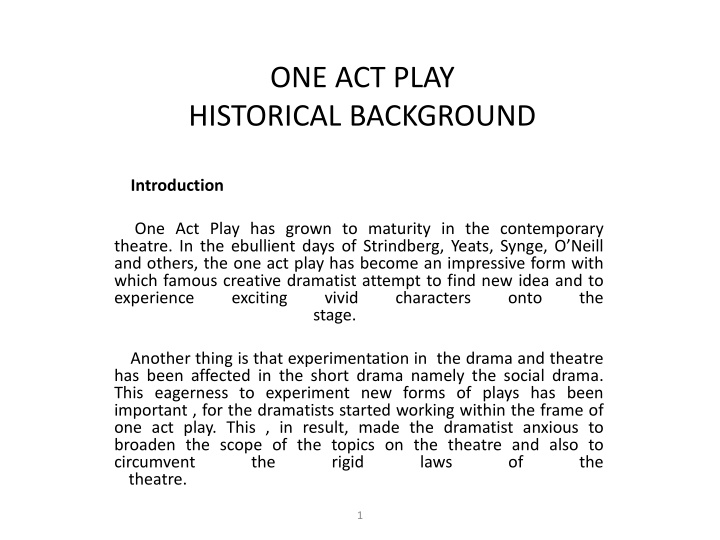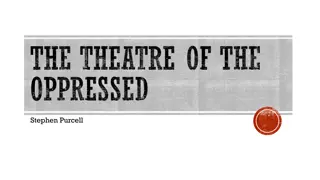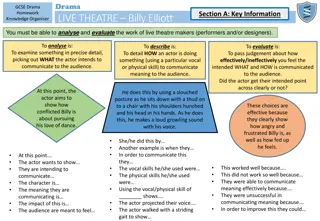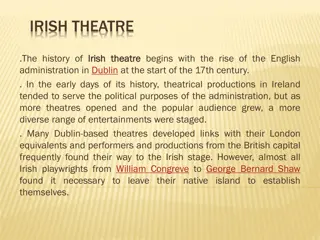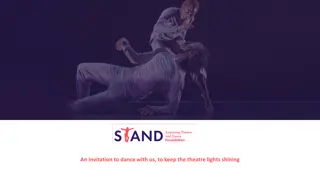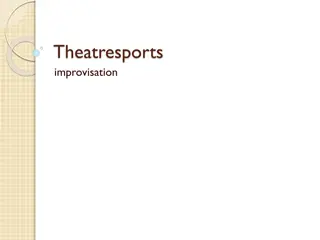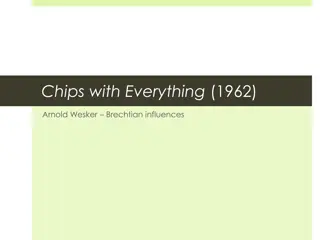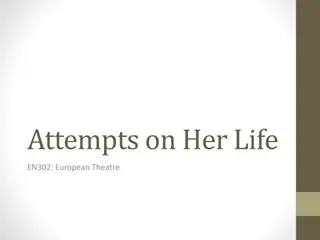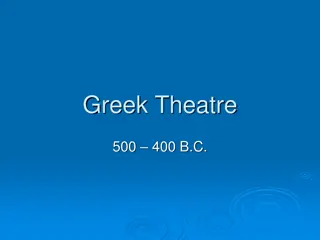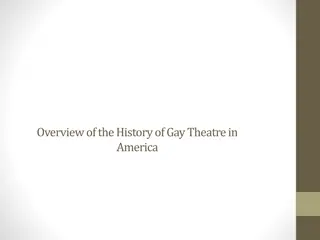Evolution of One-Act Plays in Contemporary Theatre
One-Act Plays have evolved significantly in contemporary theatre, with famous dramatists like Strindberg, Yeats, and Synge experimenting with this concise form. Initially farcical, one-act plays became more focused, dealing with single dominant situations and themes like human life's complexities. These plays maintain a unity of time, place, and action, creating a condensed yet impactful theatrical experience.
Download Presentation

Please find below an Image/Link to download the presentation.
The content on the website is provided AS IS for your information and personal use only. It may not be sold, licensed, or shared on other websites without obtaining consent from the author.If you encounter any issues during the download, it is possible that the publisher has removed the file from their server.
You are allowed to download the files provided on this website for personal or commercial use, subject to the condition that they are used lawfully. All files are the property of their respective owners.
The content on the website is provided AS IS for your information and personal use only. It may not be sold, licensed, or shared on other websites without obtaining consent from the author.
E N D
Presentation Transcript
ONE ACT PLAY HISTORICAL BACKGROUND Introduction One Act Play has grown to maturity in the contemporary theatre. In the ebullient days of Strindberg, Yeats, Synge, O Neill and others, the one act play has become an impressive form with which famous creative dramatist attempt to find new idea and to experience exciting vivid stage. characters onto the Another thing is that experimentation in the drama and theatre has been affected in the short drama namely the social drama. This eagerness to experiment new forms of plays has been important , for the dramatists started working within the frame of one act play. This , in result, made the dramatist anxious to broaden the scope of the topics on the theatre and also to circumvent the rigid theatre. laws of the 1
Therefore, for many years, the one act play has been hindered by laws of construction, characterization. Brief Historical Survey of One Act Play One act plays were written during the 18th& 19th centuries. At the beginning, they were farcical to amuse the audience before the beginning of the actual drama. So, one act play is staged after the actual drama has come to an end. The first beginning to be considered as one act play was (Monkey s Paw) which was staged as a curtain raiser . The Norwegian dramatist (Ibsen) was the first to introduce one act play. Before him, one act plays were written and played in poetic language. But, he was the first to use prose on his plays. In this way, he made the drama simple, real, and near to everyday life. This type of prosaic one act plays had been widely followed by his dramatist anticidents e.g. George Bernard Shaw and John Galsworthy. The one act play requires no elaborate setting & costumes. It can be staged in societies. scene and amateur dramatic 2
MAIN CHARACTERISTICS OF ONE ACT PLAYS 1. One act play is a play with one act, but may consist of one or more scenes. 2. One act play is usually written in a concise manner. 3. One act play deals with a single dominant situation. It attempts to produce a single effect. 4. It deals with only one theme developed through one situation to one climax so as to achieve a certain effect. 5. It treats the problems of human life such as poverty, marriage, family relations, nature of life , etc. 3
6. One act play, like the longer drama, has a beginning, middle, and end. The beginning is usually brief and serves as an introduction to the play. The play develops through the middle, which has a sort of conflict to develop the action in the play. The middle may have a climax to be the turning point of the play. The end is mostly brief and sometimes overlap with the middle( or climax). 7. The action in the play begins right at the very start of the play. 8. There is no break in the play i.e., it continues with no intervals . 9. As the play is short and the action takes place in a short period of time, there should be nothing superfluous and redundant. Therefore, the play has elaborate stage directions for the sake of minimizing the time of the play. 10. The success of the play depends on the creation of atmosphere. 11. In one act play, there is a unity of time, unity of place and unity of action. So, there are three dramatic unities in the play. 6 4
12.One act play has a simple plot. The concentration should be on action and unity of impression. 13.The characters are limited in number. In general, there is one, two, or three major characters. 14. There is no real development of the character in the play. The attention should be directed to the salient aspects of character. So, the playwright indicates the past and future of a character by presenting a very crucial moment in the life of that character. 15.In one act plays, there is an influence of realism. Therefore, the characters are ordinary men and women. Also, the description of the characters, in this play, seems to be related to everyday life. 16. One act play must present a question, for which the audience eagerly awaits the answer. 17. The language used in this play is simple i.e., it can be followed and understood without any difficulty. Everything superfluous should be avoided in the dialogue. Also, the characters speech should be purposeful. So, the best dialogue is that which does several things at one time. Therefore, the words should be carefully chosen and sentences must be compact and condensed. If the character wants to say something, he can do this in the least possible words. 5
